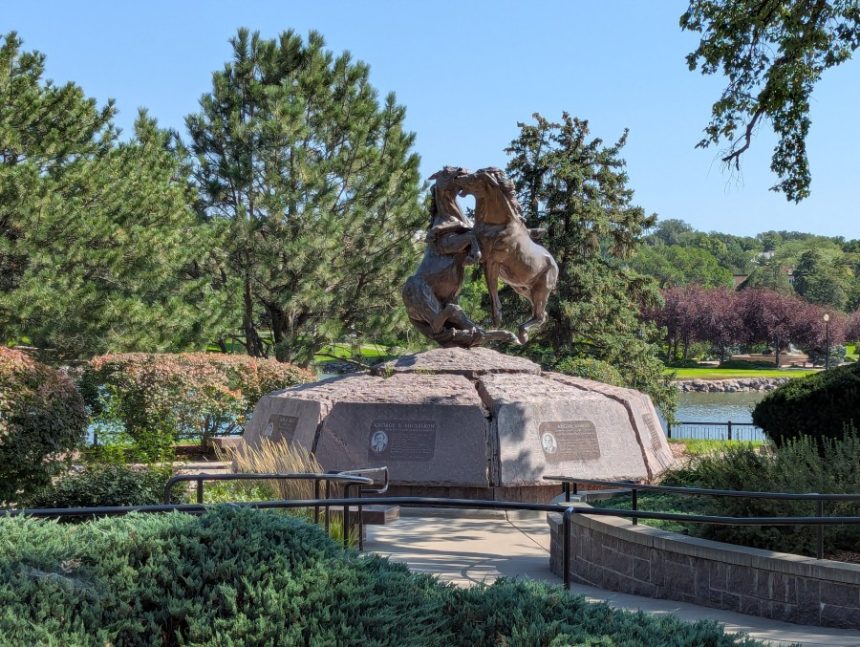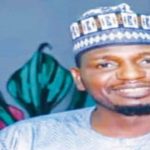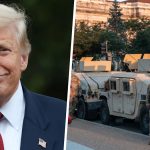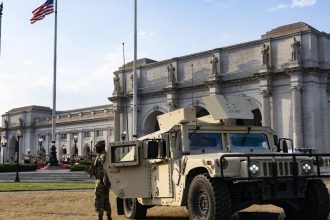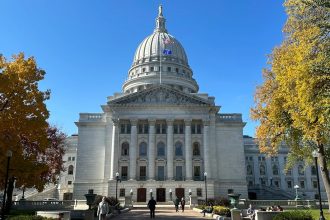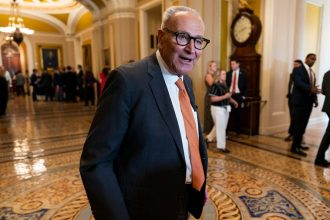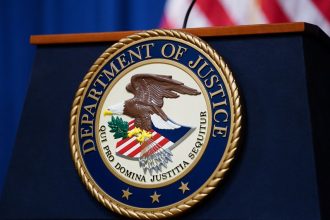PIERRE, S.D. (KELO) — When South Dakota’s legislators gather at the state Capitol on September 23 to decide whether to approve construction of a new 1,500-bed men’s state prison, they will be doing so at the call of Governor Larry Rhoden. It will be the 31st special legislative session in South Dakota’s 136 years as a state.
For the first 101 years of South Dakota statehood, only the governor could call legislators into special session. And during many of those years, no governor called a special session. Of South Dakota’s 33 governors starting with statehood, 19 found no occasion to call a special session.
Yet every one of the most recent seven has. In Rhoden’s case, the state House of Representatives turned down the final large piece of funding that was needed for a new men’s prison planned in Lincoln County. He then appointed a task force that came up with a new, less expensive proposal in northeast Sioux Falls.
The first special session was held in 1889, according the South Dakota Legislative Research Council. Earlier that year, Congress had passed the Omnibus Bill setting requirements for South Dakota statehood. The Legislature met that October 15-17, following the October 1 elections, to organize, choose officers and get ready. On November 2, 1889, U.S. President Benjamin Harrison signed the statehood proclamation, officially recognizing South Dakota.
Here’s a look back at many of the past special sessions since then.
The early years
South Dakota lawmakers met in regular legislative session only in odd-numbered years starting in 1891. That practice continued until 1963, when they started meeting each year. The first time that lawmakers considered actual legislation in a special session came in February 1916, at the call of Republican Gov. Frank Byrne.
They considered six measures in the 1916 special session, including putting several proposed constitutional amendments on the November election ballot. Among them was establishing a system of rural credits that provided low-interest state loans to agricultural producers, an approach which voters approved nine months later.
The rural credit program was something that Peter Norbeck had championed as a Republican state senator. Norbeck was elected governor in 1916, and in 1918 he called a special session for that March that went on for six days. Lawmakers considered 68 pieces of legislation and 58 were enacted into law.
One of those proposals was amending the ballot measure that would give women the right to vote. A majority of South Dakota voters that November granted women suffrage.
Norbeck called a second special session for November 1919 so the Legislature could ratify the 19th Amendment to the U.S. Constitution guaranteeing women the right to vote. He called a third special session for June 1920 that went on for nine days. In what amounted to a mini-regular session, lawmakers looked at 132 pieces of legislation and 88 became law.
The Legislature however began investigating the rural-credits system in 1925. The rising debt had quickly put South Dakota’s state government on shaky financial ground. Democratic Gov. William J. Bulow called a special session in June 1927, after vetoing the general appropriations bill that Republican lawmakers had passed. His reason: They were overspending. The special session lasted 10 days. Lawmakers considered 40 bills altogether and 21 became law, including a balanced budget that Bulow wanted.
Democratic Gov. Tom Berry called a special session that began on July 31, 1933. It ran six days. Democrats that year for the first time controlled both chambers of the South Dakota Legislature. Lawmakers looked at 59 proposals and 20 made their way into law, including legalization of so-called low-point or 3.2 beer.
Gov. Berry called another special session in December 1936, after Congress had passed the federal Social Security Act. The special session ran four days and ended on Christmas Eve. Lawmakers considered 14 bills and three became law.
Republican Gov. M.Q. Sharpe called a special session in July 1944 that ran three days. Of seven bills, five became law. One purpose of the session was to allow South Dakotans fighting in World War II to be able to vote absentee. That legislation passed.
Republican Gov. George T. Mickelson called a special session in February 1950. The 11 days provided enough time to consider 40 bills and 21 became law. The results included establishment of public power districts, related to construction of the giant hydropower dams coming on the Missouri River.
A tighter focus
After 1950 came three decades without any special session. Republican Gov. Bill Janklow called a special session for May 18, 1981, that lasted just one day — a first for South Dakota. Lawmakers considered five bills and passed one. It provided funds to operate bankrupt railroad lines.
In September of that same year, Janklow called a second special session that ran two days. Lawmakers considered eight measures and four were enacted, selling Missouri River water for the ETSI coal-slurry pipeline, a project that was proposed but never built.
Janklow called his third special session in May 1984. It ran two days. Lawmakers looked at two bills and passed one, eliminating water conservancy subdistricts that had been intended for irrigation, such as the Oahe subdistrict, and replacing them with six water development districts.
Republican Gov. George S. Mickelson — son of George T. — called a one-day session that was held on July 16, 1987. Lawmakers considered three bills, dealing with South Dakota’s bid for a high-tech physics project known as the super-conducting super collider. All became law. The short-lived project however went to Texas and Congress pulled the plug in 1993.
Mickelson called his second special session for October 3, 1991. It was for lawmakers to draw new boundaries for the state’s 35 legislative districts. Lawmakers looked at six pieces of legislation and two became law. He called his third special session for seven weeks later, on November 26, to correct the redistricting plan. Lawmakers worked on two bills and both became law.
Mickelson died in a state plane crash on April 19, 1993, and South Dakota’s lieutenant governor, Walter Dale Miller, immediately succeeded him as governor. Miller, in his new role as the state’s chief executive, called a special session for May 25, 1993, so that lawmakers could confirm his choice, Steve Kirby, as lieutenant governor.
Lawmakers also considered five bills at the 1993 special session and four were enacted into law. Approved were a plan for the Fighting Stallions memorial on the Capitol grounds honoring Mickelson and the seven others who died in the crash, as well as buying a new state plane and beefing up funding for prison security.
Miller went on lose the June 1994 primary election to Janklow. Miller nonetheless still had half a year to finish as governor. He called his second special session for July 11-12, 1994, after the South Dakota Supreme Court had ruled video lottery unconstitutional. Lawmakers considered 12 bills and four made it into law.
Miller called his third special session for September 9, 1994. Lawmakers looked at 25 bills, mostly dealing with revenue shortfalls from the video-lottery shutdown, and passed 18, with 16 becoming law. Voters re-established video lottery in the November 1994 election.
Taking on one-time issues
Back in office for a third term, Janklow called a special session for April 14, 1997, to temporarily raise state motor-fuel taxes in response to an unusually harsh winter. Lawmakers considered two similar bills and enacted the House version.
Janklow called his fifth special session for December 28-29, 2000, to deal with the proposed sale of the state-owned cement plant in Rapid City. The Republican-majority Legislature rejected four Democratic-sponsored bills and resolutions and passed five bills and resolutions that the Republican governor wanted, including putting the sale up for a public vote at a special election to be held on April 10, 2001. Voters ultimately approved the sale.
Republican Gov. Mike Rounds called a special session for June 2003 to deal with the problem of health insurers limiting or stopping offering coverage in South Dakota. Lawmakers considered five bills and three became law.
Rounds called his second special session for October 14, 2005, to provide nearly $20 million of funding to assist the conversion of the historic Homestake underground gold mine at Lead into a new science laboratory. The Sanford Underground Research Facility continues to operate today.
Republican Gov. Dennis Daugaard called a special session for June 12, 2017, to deal with the legally complex question of public recreational access to non-meandered water over private property. Lawmakers adopted one bill at the governor’s request and set aside two resolutions from Republican lawmakers.
Daugaard called a second special session for September 12, 2018, after South Dakota’s victory in the U.S. Supreme Court in the Wayfair remote-sales tax decision. The case was argued by South Dakota Attorney General Marty Jackley. Daugaard later amended the request for a special session to also include a change in state law on when elected officials can take office. Lawmakers approved all three measures.
Republican Gov. Kristi Noem called a special session for October 5, 2020, to allocate federal funds that South Dakota state government received from Congress to deal with the coronavirus. Lawmakers passed the one bill and the one resolution that were introduced.
A lawmakers-led constitutional change
South Dakota voters in 1990 gave the Legislature the power to call itself into special session by amending the state Constitution with what is now Section 31 of Article 3. The measure passed with 51.64% support: 117,969 to 110,468. And though a majority of voters statewide backed it, the measure lost in 43 of South Dakota’s 66 counties.
The measure passed largely because of big margins of support in three counties: Yes outnumbered no votes by 6,056 in Minnehaha (Sioux Falls); 3,391 in Pennington (Rapid City); and 1,003 in Codington (Watertown).
The Legislature had used the authority granted to it by the South Dakota Constitution to put the measure on the ballot. The joint resolution was on behalf of the Legislature’s Reapportionment Task Force and its sponsors were Republican Sen. George Shanard of Mitchell, Democratic Sen. Roger McKellips of Alcester, Republican Rep. Jerry Lammers of Madison and Democratic Rep. Bob Duxbury of Wessington.
The Senate passed SJR 1 by a vote of 33-1, with the nay coming from Republican Sen. Mary Wagner of Brookings. The House put SJR 1 on its consent calendar, which meant it wouldn’t be debated, and passed it 67-1, with the nay coming from Democratic Rep. Dennis VanOverschelde of Salem.
How lawmakers have since used that new power
Since the amendment’s adoption, the Legislature has called itself into special session four times.
Three of them– 2001, 2011 and 2021 — were for the process known as legislative reapportionment. That’s where lawmakers decide, following the most-recent U.S. census each decade, how South Dakota should be divided into 35 legislative districts. Those boundaries are then used for the purposes of electing two representatives and one senator from each of the 35 areas.
This was the same purpose as when Gov. Mickelson called them into special session in 1991.
The fourth time that lawmakers called themselves in came in 2021, for something that had never happened before in South Dakota — the impeachment of a state elected official.
The Legislature considered the impeachment and removal from office of then-Attorney General Jason Ravnsborg (rouns-borg). The car Ravnsborg was driving had struck and killed a pedestrian, Joe Boever, along US 14 at the west edge of Highmore on the night of September 12, 2020.
The House on April 12, 2021, voted 36-31 to impeach Ravnsborg. That sent the matter to the Senate to decide whether he must go. On June 21, 2021, senators voted 24-9 to find Ravnsborg guilty of crimes in the death of Boever, and 33-0 to find Ravnsborg guilty of malfeasance in the death. The Senate then voted 33-0 to forever bar Ravnsborg from holding any public office in South Dakota.
Note to readers: KELOLAND Capitol Bureau reporter Bob Mercer has covered South Dakota legislative sessions since 1985. Sources for this report include South Dakota Legislative Research Council records; South Dakota State Historical Society publications; National Governors Association data; and Over A Century of Leadership, Center for Western Studies, 1987.
Copyright 2025 Nexstar Media, Inc. All rights reserved. This material may not be published, broadcast, rewritten, or redistributed.
For the latest news, weather, sports, and streaming video, head to KELOLAND.com.


